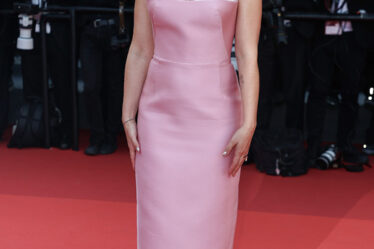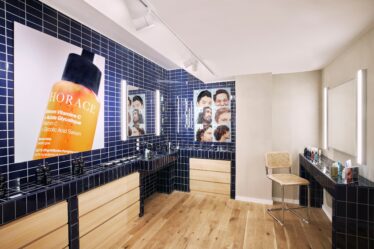A year after launching accessories label JW Pei, husband and wife duo Yang Pei and Stephanie Li were faced with a choice: Go up or down.
When the two launched their brand, which sells bags, shoes and other accessories, in 2018, it sat squarely within the accessible luxury category, selling bags like its now discontinued Fiona Bag for $300. But after launch, it had found only “lukewarm success,” Pei said, as the contemporary sector, which sits in the often-tough middle between luxury and fast fashion, was becoming increasingly saturated, with labels like Staud, Danse Lente and Rouje.
To differentiate, contemporary brands like Isabel Marant hiked their prices so they could sell to higher-earning customers who are usually less vulnerable to economic downturns. JW Pei, however, did the opposite.
The accessories label’s hero product, the Gabbi handbag, which features a ruched shoulder strap and hobo shape, is priced at $89.
“We can keep prices low because we function like a tech company,” said Pei, the label’s chief executive. “We only make what the data tells us will sell.”
In deciding what bags to produce, JW Pei looks at what bags are added to cart and which “eventually turn into a sale,” Pei said, and orders product accordingly to eliminate excess inventory. Plus, the brand owns its entire supply chain – pillars which Pei says have allowed the brand to grow profitably. Last year, the brand grew sales 50 percent over 2022 to $50 million.
More than just profitable growth, the brand has earned a crop of high-profile fans. Stars including Gigi Hadid, Megan Fox and Emily Ratajkowski have been spotted carrying JW Pei bags. The label’s bags have also made it onto the red carpet, with actress Selena Gomez wearing a sparkly Gabbi bag to this year’s Golden Globes.
To drive further growth, JW Pei wants to use artificial intelligence to speed up its design process and expand its geographic footprint with new store openings. Meanwhile, its parent company, PL Brands Group, is acquiring its competitors, like Danse Lente, betting that it can build a network of affordable bags that feel a bit more luxe than fast fashion.
“Consumers are feeling pressure across their entire wallet,” said Kristen Classi-Zummo, industry analyst for apparel at Circana. “Consumers are trading down to fast fashion or to dupes. For those trading up, their ceiling is much lower and has landed in contemporary fashion.”
Generating Buzz
For consumers like New York City-based writer Jacquelyne Germain, who owns three JW Pei bags, the brand feels like “a step-up from Zara” with a price tag much easier to swallow than a designer label.
According to Pei, that mix of “high quality materials” with trendy design details has been instrumental to the brand’s growth.
“We had quietly built a community on Instagram where our products really shine,” said Li, the brand’s creative director. “The buzz had been organic largely because I believe we’re fun and playful, but also, the bags can be worn over and over and in different situations.”
Another boost to that buzz has been the brand’s circle of celebrity fans. Former first daughter Ivanka Trump was one of the first known names to place an order on the brand’s site, prompting Pei and Li to begin sending their bags to celebrity stylists, eventually landing on the arms of Hadid, Hailey Bieber and more. Since then, Pei says, the brand’s growth has been exponential.
“Any $600 bag or a Birkin can be seen on a model, but the press, paparazzi and social media pay attention when the bag is less than $100,” said Pei. “It’s a win-win for us and the stylists.”
Celebrity placement remains its primary tool for driving conversation online, and the brand is exclusively looking to connect with massive names like Hadid and Bieber.
“We’re a little-known brand, but everyone in the world would instantly know who Gigi Hadid is,” Pei said. “That is our leverage when we enter new markets like Japan and Korea or work with new retailers. Working with local celebrities would not be as effective.”
What’s Next
Relying on a data-driven product strategy and celebrity endorsements has gotten the brand this far, but JW Pei is looking beyond those tactics in 2024.
This year, the company will launch a ready-to-wear line and begin experimenting with artificial intelligence in the design process. JW Pei will use generative AI programme Midjourney to assist in fashion design research — so it can more quickly identify emerging trends and silhouettes — as well as sketching the designs. The label’s human designers, led by Li, will use the research to inform new colourways, material selection and produce collections.
The goal is to shorten production times to get trendy items to consumers faster, Li added.

Later this year, the brand — which sells via its own e-commerce platform and wholesale partners like Nordstrom and Selfridges — is set to open its first brick-and-mortar shop in New York’s SoHo neighbourhood in the autumn. The store’s stock will be determined by data: Prior to opening the shop, JW Pei will launch an online marketing campaign designed to determine which products and styles New York consumers want to buy. Only those products will be sold in store.
The plan is to repeat this process in other locations, and open 20 stores in the US as well as locations in London, Dubai and Hong Kong in the next three to five years.
But perhaps JW Pei’s greatest ambition is to expand the reach of its parent PL Brands Group, which is owned by Pei and Li.
The company acquired Danse Lente, a London-based accessories label and one of JW Pei’s competitors, in December 2023, and wants to apply the same approach it took with JW Pei to the label: Expanding into new categories, entering wholesale and of course, lowering prices. Because it also owns China-based manufacturing and distribution firm Lo Monte International, it controls the supply chain for both brands, giving the company more control over pricing, materials and labour costs.
“Danse Lente has great brand value but their prices are too high,” said Pei. “With our factories, we’ll be able to drive the prices down, test new styles online and ensure the brand keeps growing.”
This year, it hopes to add three new brands to its arsenal, whether through an internal launch or acquisition. In keeping the strategies that have proved fruitful so far at the heart of their business, Pei believes it can keep expanding.
“Everybody has the capability to design bags, have beautiful images and strong marketing, which is why the $300 price point or the contemporary market is a dead zone,” said Pei. “In a few years, the biggest differentiator will be the supply chain and how well a company is situated to get the consumer’s attention in new ways.”


